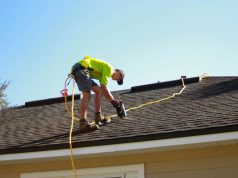Incorporating soft play areas into a business setting can be an excellent investment, especially for venues looking to attract families and improve customer retention. Whether it’s a leisure centre, a restaurant, or a standalone indoor play facility, the right soft play equipment can turn a standard business environment into a dynamic, engaging space that encourages repeat visits and enhances customer satisfaction. However, not all equipment is created equal. Knowing what to look for when making a purchase is key to ensuring safety, longevity and value.
Safety and Compliance First
Safety is the cornerstone of any soft play area. The equipment you choose should adhere to UK safety standards, including the EN1176 and EN1177 regulations which govern play equipment and impact-absorbing surfaces. Always check that materials are non-toxic, fire-resistant, and designed with young children in mind.
Padding should be sufficient, seams must be reinforced, and there should be no sharp edges or small detachable parts that pose choking hazards. A reputable supplier will be able to provide certification and documentation to verify compliance. This not only protects your customers but also safeguards your business from legal issues.
Space and Layout Planning
Before selecting equipment, it’s essential to evaluate the available space. The dimensions, ceiling height, and overall flow of the area will affect the type of structures you can install. It’s important to make use of both vertical and horizontal space to create a layered and stimulating experience for children without overcrowding.
Good layout planning also considers access for cleaning, maintenance, and emergency evacuation. A well-designed play area should include clear sightlines so that staff and parents can monitor children easily. Engaging equipment is important, but safety and accessibility must always take precedence.
Durability and Maintenance
Soft play equipment is subjected to constant use, which means it must be built to last. Look for products made from high-density foam, commercial-grade vinyl, and sturdy internal framing. Zips and fastenings should be industrial strength to withstand daily wear and tear.
Ease of maintenance is also crucial. Equipment should be easy to clean and resistant to staining. Removable covers, wipe-clean surfaces, and replaceable parts can all help extend the life of your investment. It is also worth considering whether the supplier offers a maintenance package or spare parts service, which can save time and money in the long run.
Age-Appropriate Design
Another vital consideration is choosing equipment suitable for the age group you intend to serve. Younger children need low, padded structures that encourage exploration and safe motor skill development. Older children may benefit from climbing frames, tunnels and slides that offer more complexity and physical challenge.
Clearly designated zones for different age groups can help reduce the risk of accidents and improve the overall experience for users. Including quiet zones or sensory areas can also be beneficial, especially for children with additional needs.
Thematic and Customisable Options
Today’s soft play areas are not limited to primary colours and basic shapes. Many suppliers offer themed environments, such as jungle, underwater or space-themed installations, which can greatly enhance the play value and aesthetic appeal of the space. Branding can often be incorporated, allowing your business to create a unique environment that sets it apart from competitors.
When browsing soft play for sale, consider suppliers that offer bespoke solutions or modular systems. This allows you to tailor the design to your business’s identity and future-proof the play area by enabling easy reconfiguration or expansion.
Insurance and Liability
Soft play areas can increase your exposure to risk, so having the correct insurance in place is vital. Speak with your insurance provider to ensure you are covered for public liability and that your equipment complies with all necessary standards.
Additionally, investing in staff training for safe supervision and routine inspections can help reduce liability and ensure a safe environment for all users. Keeping a detailed record of maintenance and safety checks is also good practice and may be necessary for insurance claims or inspections.




